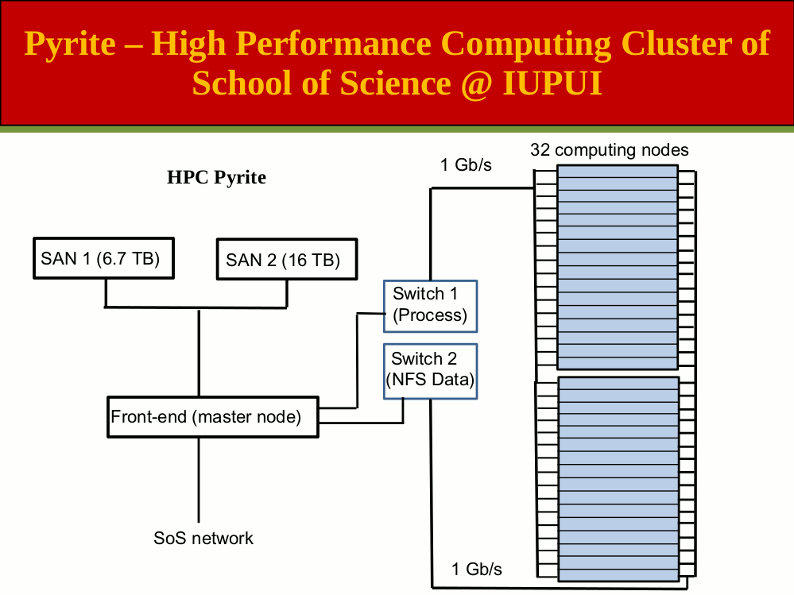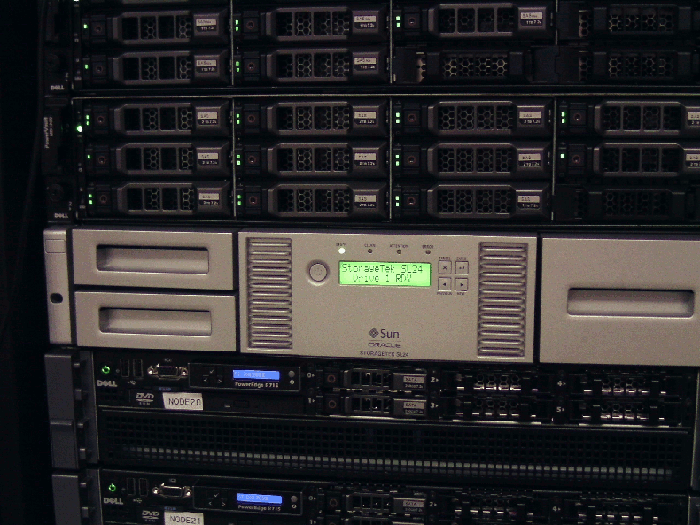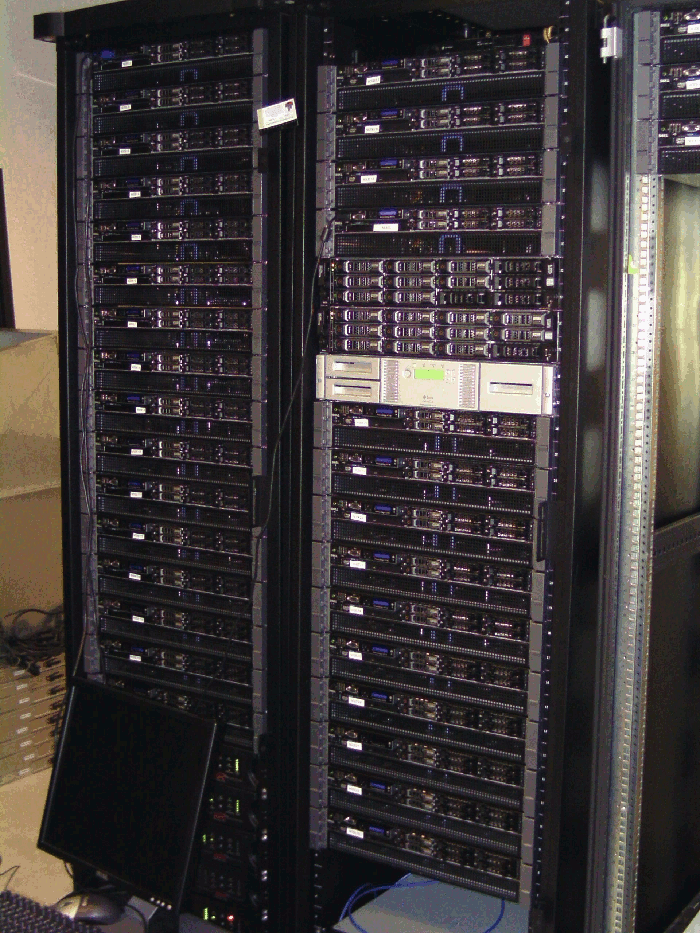Difference between revisions of "Cluster"
Jump to navigation
Jump to search
| (27 intermediate revisions by 2 users not shown) | |||
| Line 1: | Line 1: | ||
| − | ''Pyrite'' is a High Performance Computing Cluster (HPCC) jointly managed by us and the School of Science (SoS) | + | ''Pyrite'' is a High Performance Computing Cluster (HPCC) jointly managed by us, the research groups of [http://chem.iupui.edu/people/nigel-richards Nigel Richards] (Chemistry) and [http://physics.iupui.edu/~fzhu0/People/fzhu/ Fangqiang Zhu] (Physics), and the School of Science (SoS) Research&Infrastructure Computing team led by [http://science.iupui.edu/ppgeninterorr-scott Scott Orr] and [http://science.iupui.edu/ppgeninterdailey-debbie Debbie Dailey]. Located in the IUPUI Science Building, the ''Pyrite'' cluster delivers ~10 TFLOPs peak performance via 32 dual-processors octa-core AMD Opteron nodes (512 CPU cores in total) with 1024 GB of total memory and 22.7 TB of total disk space. This core facility is aimed at meeting the rapidly increasing local needs for scientific computing in research and education. <br> |
| − | <br> | ||
==A Schematic Diagram of the ''Pyrite'' Cluster== | ==A Schematic Diagram of the ''Pyrite'' Cluster== | ||
| − | [[File: | + | [[File:Pyrite.gif|pyrite cluster info]] |
| + | |||
| + | ==Tape library & storage array on ''Pyrite''== | ||
| + | |||
| + | [[File:Headnode.gif|pyrite cluster info]] | ||
| + | |||
| + | ==View of the entire ''Pyrite'' Cluster== | ||
| + | |||
| + | [[File:Allnodes.gif|pyrite cluster info]] | ||
Latest revision as of 20:30, 24 October 2017
Pyrite is a High Performance Computing Cluster (HPCC) jointly managed by us, the research groups of Nigel Richards (Chemistry) and Fangqiang Zhu (Physics), and the School of Science (SoS) Research&Infrastructure Computing team led by Scott Orr and Debbie Dailey. Located in the IUPUI Science Building, the Pyrite cluster delivers ~10 TFLOPs peak performance via 32 dual-processors octa-core AMD Opteron nodes (512 CPU cores in total) with 1024 GB of total memory and 22.7 TB of total disk space. This core facility is aimed at meeting the rapidly increasing local needs for scientific computing in research and education.


